TIPS FOR CHILDREN'S DENTAL TREATMENTS
Problems to Watch for in Growing Children
Malocclusions (“bad bites”) like those illustrated below, may benefit from early diagnosis and referral to an orthodontic specialist for a full evaluation.
Open Bite
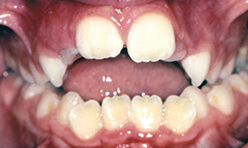
Protrusion
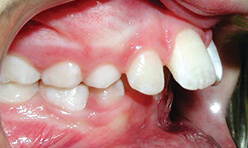
Crowding
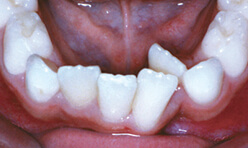
Under Bite
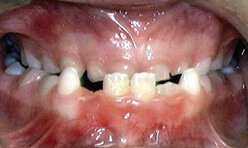
Spacing

Deep Bite
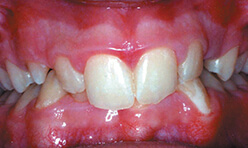
In addition, if you notice any of the following in your child, check with your orthodontist:
- early or late loss of baby teeth.
- difficulty in chewing or biting.
- mouth breathing.
- biting the cheek or the roof of the mouth.
- speech difficulties.
- jaws that shift or make sounds.
- facial imbalance.
- grinding or clenching of the teeth.
Final treatment decisions should be made among the parent, child’s dentist and orthodontist.
Visit the American Association of Orthodontists website at aaoinfo.org
The Right Time for an Orthodontic Check-Up: No Later than Age 7
The American Association of Orthodontists recommends all children get
a check-up with an orthodontic specialist no later than age 7. Here’s Why:
- Orthodontists can spot subtle problems with jaw growth and emerging teeth while some baby teeth are
still present.
- While your child’s teeth may appear to be straight, there could be a problem that only an orthodontist
can detect.
- A check-up may reveal that your child’s bite is fine. Or, the orthodontist may identify a developing
problem but recommend monitoring the child’s growth and development, and then, if indicated, begin
treatment at the appropriate time for the child. In other cases, the orthodontist might find a problem
that can benefit from early treatment.
- Early treatment may prevent or intercept more serious problems from developing and may make treatment
at a later age shorter and less complicated. In some cases, the orthodontist will be able to
achieve results that may not be possible once the face and jaws have finished growing.
- Early treatment may give your orthodontist the chance to:
- Guide jaw growth.
- Lower the risk of trauma to protruded front teeth.
- Correct harmful oral habits.
- Improve appearance.
- Guide permanent teeth into a more favorable position.
- Create a more pleasing arrangement of teeth, lips and face.
- Through an early orthodontic evaluation, you’ll be giving your child the best opportunity for a healthy,
beautiful smile.
If your child is older than 7, it’s certainly not too late for a check-up.
Because patients differ in both physiological development and treatment needs, the orthodontist’s goal is to
provide each patient with the most appropriate treatment at the most appropriate time.